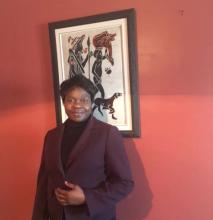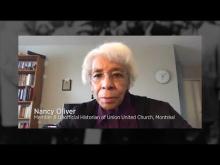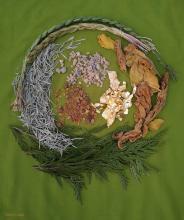
The intercultural vision is about more than inclusion—it’s about a radical welcoming that calls all of us to change.
Worship Ideas
- 2019 Black History Month: International Decade for People of African Descent (32.59 KB) (Word): A service of Word and Sacrament from The United Church of Canada / United Church of Christ
- 2020 Black History Month Service (54.44 KB) (Word): A worship service marking the legacy of slavery in Canada and the British Commonwealth with the theme of “all are made in the image of God.” By the Rev. Paul Douglas Walfall.
- Advent Service: The Gifts of the Four Directions (45.49 KB) (Word): Some of the “best loved” material of earlier Advent/Christmas/Epiphany issues of Gathering.
- Asian Heritage Month | A Step Nearer to Harmony (39.25 KB) (Word): A worship service for Asian Heritage Month that encourages harmonious living.
- Asian Heritage Month | Our God Goes with Us (640.15 KB) (PDF): A worship service for Asian Heritage Month worship service this year that focuses on the United Churches of Japanese-Canadian background and reminds us that no matter where we go and whatever the future holds, we need not fear, for God goes with us and before us.
- Beautiful and Beloved, Vulnerable and Whole (24.5 KB) (Word): A service by the Rev. Miriam Spies for Disabilities Awareness Day
- On Eagle's Wings: Black History Month Service (35.72 KB) (Word): May we not grow weary but soar on eagle’s wings as one people, bound together in your love.
- Pentecost in Asian Voices 2021 (video): A beautiful worship service for Pentecost and personal reflection conducted by United Church ministers for Asian Heritage Month. Presented in Bunun, Korean, Cantonese, Japanese, Tagalog, and English, reflecting the Pentecost vision of a common story. Subtitles in English.
Music
- Sing, Thanks to Our God (Song of Many Tongues) (73.93 KB) (PDF): A unison worship song (includes optional descant) with piano accompaniment for use during Asian Heritage Month. Written by Amy Yea Kyong Lee.
Related Material
- Acknowledging the Territory in Worship (170.12 KB) (PDF): A brief guide to help congregations and bodies of the church incorporate an Acknowledgement of Territory into their gatherings.
- Asian Cultures, Asian Heritage: This video celebrates Asian cultures within the United Church today. Asian leaders speak of their experiences in the church.
- Black History Month 2021 - Patricia Watson, Bedford United Church, Nova Scotia: For Black History Month, Patricia Watson share ways the wider church can learn from the Black communities of faith in Canada's Atlantic region.
- Black History Month Nancy Oliver-MacKenzie: Nancy Oliver-MacKenzie shares the history of Montreal's Union United Church and its long-time role in the work for social justice for the Black community and beyond.
- Intercultural Hymn Service (24.77 KB) (Word): A service framed around hymns in Voices United from cultures around the world.
- International Decade for People of African Descent: 2021 Prayer Cycle (84.59 KB) (Word): We invite people to pray for the human rights and fundamental freedoms of peopl
- Questioning Worship: Engaging All God's Peoples: Sample Chapter (906.07 KB) (PDF): A resource for talking about intercultural worship; sample session.
- Recommitting to Justice, Equity, and Peace (17.54 KB) (Word): A prayer of confession about racial justice - for individual or community prayers
- SCM's Disability, Faith and Justice Devotional (2.64 MB) (PDF): We are all made in the image of God, but people with disabilities have been excluded and shamed for who they are. This devotional from the Student Christian Movement of Canada’s asks: How should our faith shape us in this struggle?
- Scripture and Incense (123.18 KB) (PDF): A Bible study for Asian Heritage Month on Psalm 141:1–4
- The Repudiation of the Doctrine of Discovery | United Church of Christ (947.4 KB) (PDF): A biblical reflection
- UN Decade for African Descent: Join The United Church of Canada and the United Church of Christ USA in promoting recognition, justice, for people of African descent.
- Voices United: Intercultural Index (24.42 KB) (Word): A listing of hymns from Voice United identified by their country of origin.
For more inspiring worship ideas and resources subscribe to GatheringWorship.ca!







